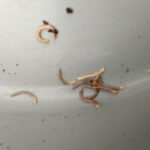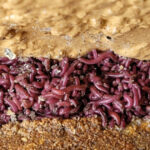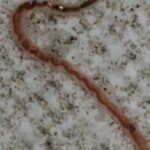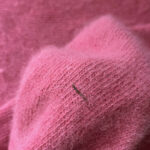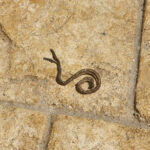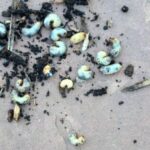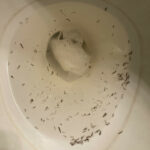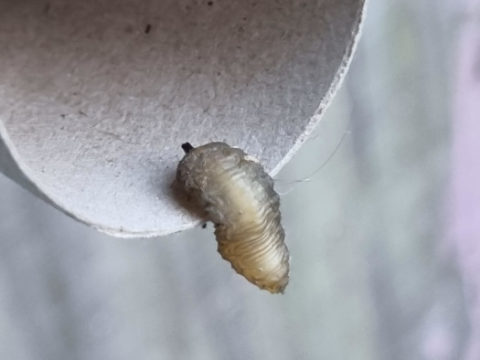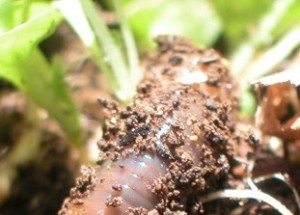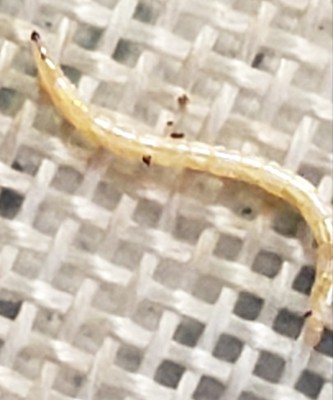
“What is this?” asks this reader about the white, segmented creature she found in the very bottom of her Vermicompost bin. She thinks it may be some kind of beetle larva, but nonetheless wants our help identifying it.
Our reader states that she consulted past articles of ours when looking for answers about this mysterious creature’s identity and found a match with the critter in this article about a flea larva. However, as our reader has grown up around outdoor pets which consistently had fleas, and she is thus familiar with “the life cycle stages of fleas”, she does not believe this to be flea larva. This creature is “too long, too waxy, and has a segmented body”, all of which contradict the transparent and non-segmented appearance of the flea larva. Additionally, this critter has a “black stinger-looking tip on one end” that “is used as a drill bit to very quickly dig into the soil.” Our reader believes that the larva will eventually turn into some sort of beetle, but she just does not know what type.
We think our reader is definitely on to something in identifying this as a beetle larva, and we agree that it could indeed be one. To be more specific, we think this is the larval form of a click beetle, better known as a wireworm. When more mature, this garden pest is usually bigger, a yellow color and has an orange head, but at their younger stages, they are very much this “waxy”, yellow-white color. Nonetheless, the segmentation and shape of the body is very similar and the location adds up with the behavioral characteristics of the wireworm. These larvae live under the soil and feed on various crops such as onions, potatoes, corn and carrots. They tend to live quite far under the soil, as far as 24-inches deep, and will live there for 2-6 years before pupation begins! The depth at which these larvae tend to live would explain why the wireworm our reader found was at the bottom of the compost bin.
Wireworms are not dangerous to humans or pets, but they are dangerous to plants. That said, as they mostly attack big crops and are more of a nuisance at a farm, we do not think our reader has much to worry about, especially since it was found in a compost bin, where plants (and other organic materials) go to die anyway. Wireworms do not attack other larvae or worms either, and as they prefer living plants to decaying ones, we doubt they would provide much competition in the compost bin. Of course, if our reader still wants to get rid of the wireworms, and/or is worried about other plants in her home getting infested, then we recommend isolating the compost bin from nearby plants and sifting through the compost bin’s soil to find more worms. Any wireworms found can just be deposited outside, somewhere where they will not be a danger to anyone’s crops.
To conclude, the worm our reader found at the bottom of her compost bin is a wireworm, the larva of the click beetle. We hope this article proves insightful to our reader, and that she found the answers she was looking for. We wish her the best and happy composting!
All About Worms is always free, always reader-supported. Your tips via CashApp, Venmo, or Paypal are appreciated! Receipts will come from ISIPP Publishing.
You might also find these guys interesting!






